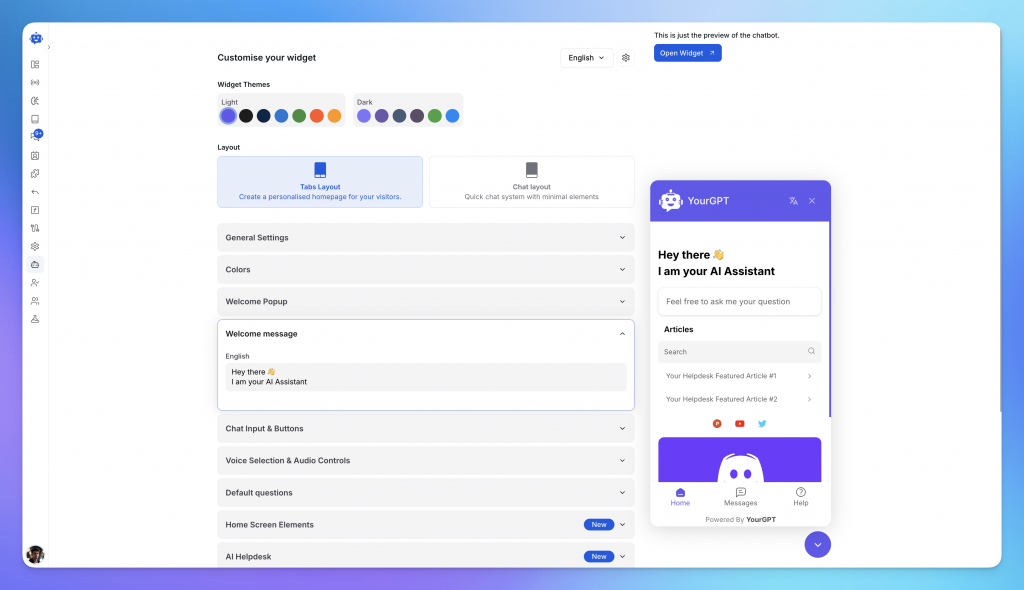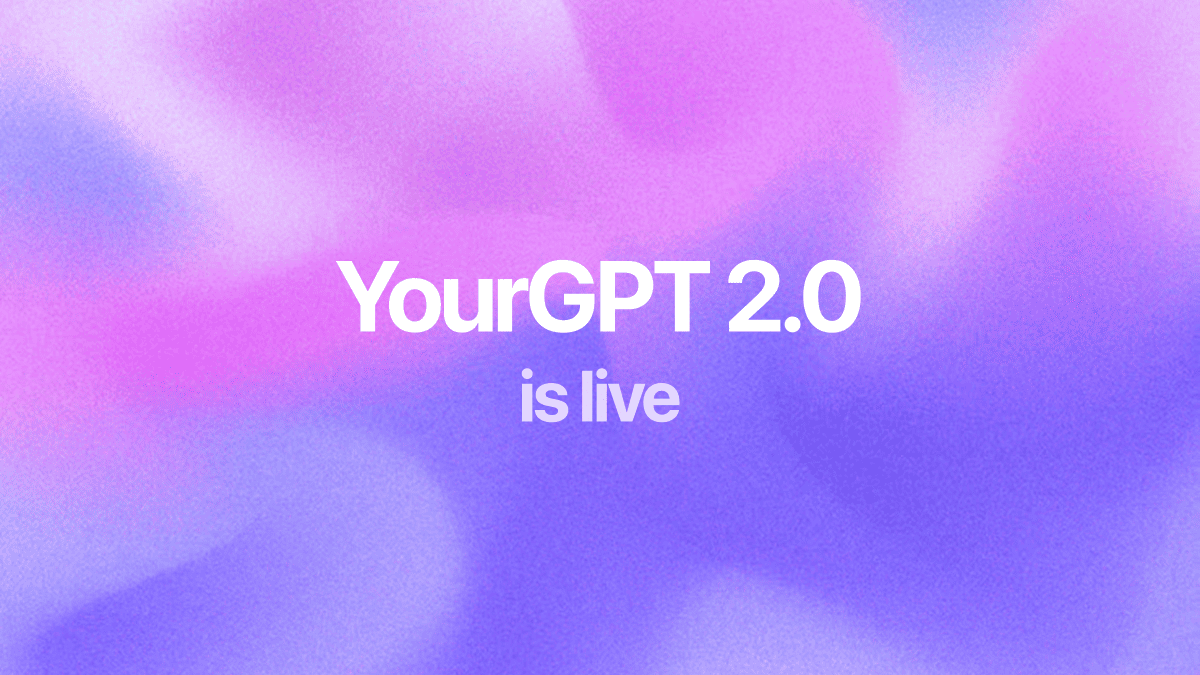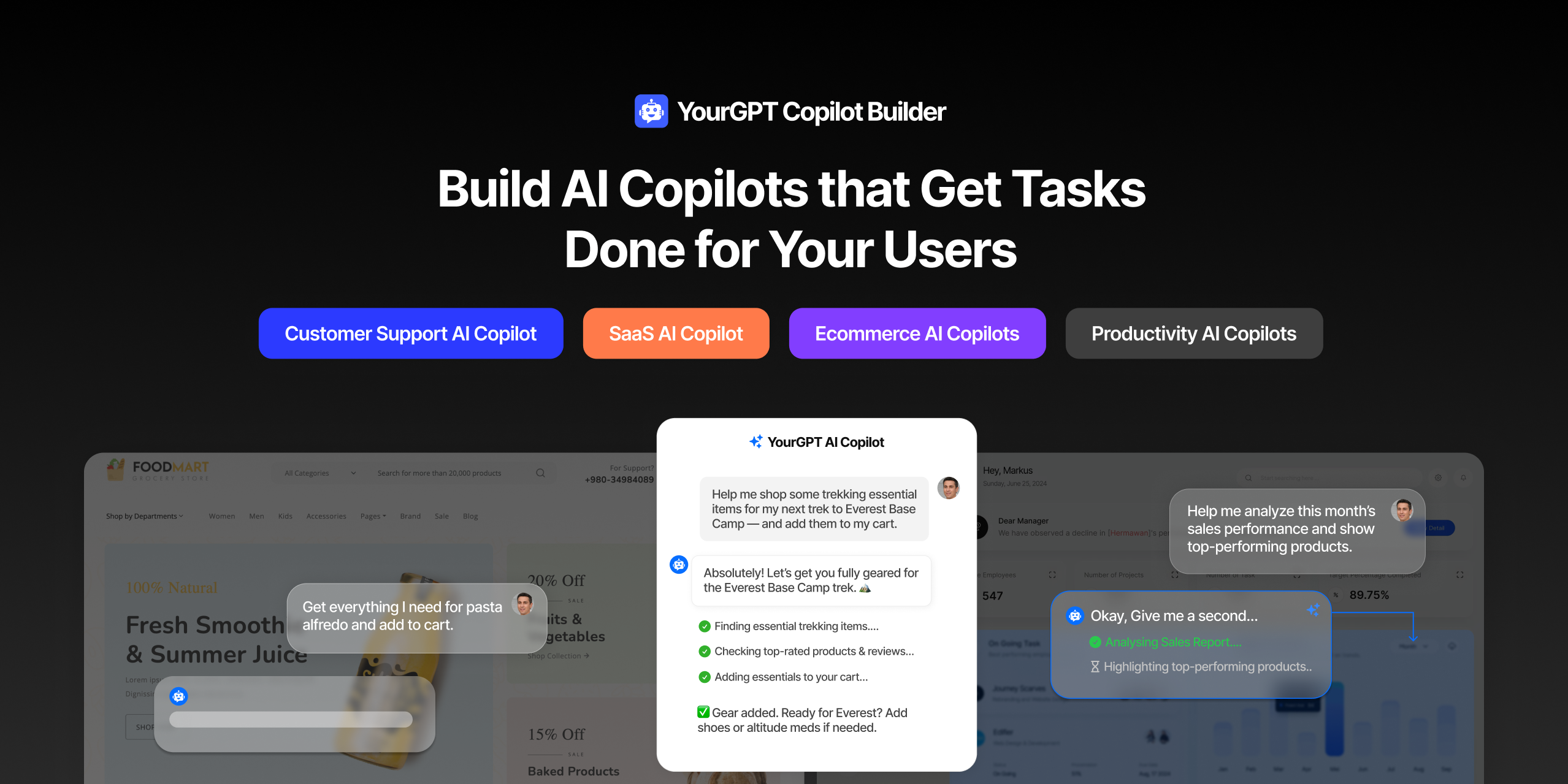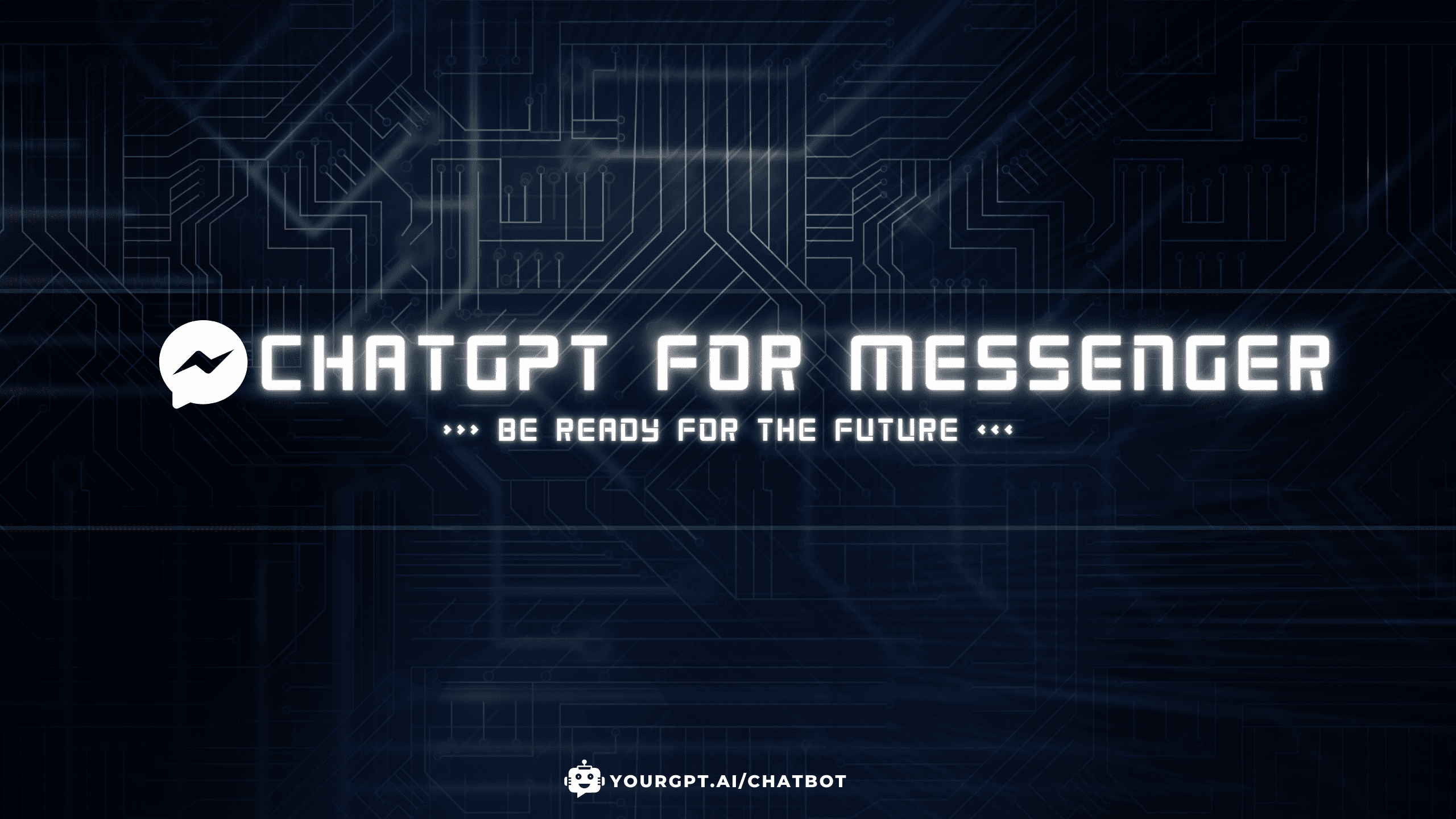Retrieval-Augmented Generation (RAG) Chatbots: The Future of Customer Support Solutions with YourGPT Chatbot


Introduction to RAG
Retrieval-Augmented Generation (RAG) is the most effective method for improving the accuracy and contextuality of chatbots. Instead of relying only on training data, RAG connects large language models (LLMs) to external sources — helping businesses answer user queries with up-to-date and verified information.
In this blog, you’ll learn:
- What RAG is and how it works
- Real-world applications of RAG chatbots
- Business benefits of using RAG
- How YourGPT Chatbot uses RAG with real examples
Let us start with understanding basics of RAG.

Retrieval-Augmented Generation (RAG) is a technique that connects Large Language Models (LLMs) with external knowledge sources to improve the quality of AI-generated responses.
Instead of relying only on pre-trained data, RAG retrieves relevant content in real-time from external knowledge sources like databases, documents, or websites — and combines that with the model’s generation abilities. This makes responses more accurate, up-to-date, and context-specific.
RAG was introduced in 2020 by Patrick Lewis and a team at Facebook AI Research (now Meta AI) and has since become one of the most powerful methods for improving chatbot performance and reliability.
RAG operates in two main stages:
This approach ensures that the chatbot doesn’t “hallucinate” or guess answers but instead grounds them in verified knowledge.
Fine-tuning a language model on new data is expensive and time-consuming.
RAG avoids this by retrieving relevant content at runtime — making it faster, cheaper, and easier to update.
With YourGPT’s no-code RAG chatbot, you don’t need to retrain a model. Just upload your content, and it starts working.
RAG chatbots combine retrieval-based search with generative AI to offer a more reliable and scalable way to handle customer conversations.
Here’s why businesses are replacing traditional chatbots with RAG-powered ones:
RAG chatbots reduce the risk of wrong answers by grounding responses in real, external data. It minimises the risk of “hallucination,” where the model generates incorrect or misleading responses.
Unlike pre-trained models that rely on outdated data, RAG pulls live content from your documents, knowledge base, or website.
The result: accurate answers that reflect your current operations, offers, or product updates.
RAG makes it possible to keep your chatbot current without re-training the base model. You save time and compute costs by simply updating the connected data source — no model fine-tuning needed.
You decide what the AI can access. Want to add a new product line? Just upload the content. Want to remove access to sensitive information? Remove it from the source — no neural changes required.
RAG systems adapt quickly to any domain — from legal and healthcare to ecommerce and education. You don’t need domain-specific models. Just plug in your knowledge base and go live.
By handling most of the repetitive questions, RAG chatbots reduce workload on human agents. Escalation only happens when necessary, which improves efficiency and customer satisfaction.
YourGPT Chatbot stands as a perfect example of a RAG-based chatbot. Here’s how it raises the bar in customer support:
From customer support to sales, YourGPT adapts to your use case. And the best part — you can launch it without writing a single line of code.
Here’s what you can do with YourGPT Chatbot:
Upload your website, documents, knowledge base, or help articles. YourGPT uses this content to train the chatbot instantly — no coding or technical setup required.
It supports multiple file types, URLs, and platforms like Notion, Google Drive, and public websites.
Customise your chatbot’s tone, greeting message, avatar, and behaviour to match your brand.
Whether you want a formal assistant or a casual support agent, YourGPT gives you complete control without needing developers.
Every answer is backed by your actual content. When users ask questions, YourGPT retrieves the most relevant information and uses GPT to generate a clear, human-like response — grounded in facts, not guesswork.
It even supports code execution and API calls to fetch live data like order status or ticket updates.
YourGPT Chatbot supports over 100 languages out of the box. Whether you’re serving customers in English, Hindi, Spanish, or Japanese — the chatbot understands and replies naturally.
When users engage with your chatbot, YourGPT can automatically collect their details, qualify them as leads, and push the information into your CRM or database.
This means your chatbot does more than answer — it grows your pipeline.
Using the power of the latest and most powerful Generative Pre-trained Transformer (GPT) models, YourGPT AI Chatbot can provide contextually accurate responses. This guarantees that customer concerns are addressed effectively.
YourGPT Chatbot can be easily integrated into your existing infrastructure, be it CRM systems, databases, or other third-party applications, with API calling and Code Execution.
As YourGPT Chatbot interacts with customers, it learns from those interactions. This self-improvement over time makes the chatbot more effective and efficient, reducing the burden on human customer support agents.
YourGPT Chatbot is not limited to text-based interactions. It can also handle interactive media like images, GIFs, and videos, making the customer support experience more engaging.
Customers have the option to provide feedback on their interaction with the chatbot. This feedback is valuable for ongoing refinement and ensuring that the chatbot meets user expectations.
You can launch your custom RAG chatbot in just two minutes:
1. Sign Up: Visit the YourGPT Chatbot and create an account to add AI co-pilot to your website or any other you want it to deploy.

2. Train: Upload your training data and train your chatbot—no coding required.
Our intuitive, no-code interface lets you easily train your AI chatbot using your own data. We support multiple data sources to give your chatbot the context it needs to deliver accurate, helpful responses.

3. Customise: You can customize your chatbot’s look, tone, welcome message, and personality — all without any code.

4. Integrate: Easily embed your chatbot on your website or app using a simple code snippet. You can also connect the chatbot to your preferred social channels for seamless, omnichannel customer engagement.
5. Go Live: watch your chatbot interact in real-time!


Traditional chatbots struggle with context, give outdated answers, and often frustrate users. RAG chatbots change that.
By combining retrieval with generation, they offer accurate, up-to-date, and context-aware responses — without the cost of constant retraining. This makes them the most practical and scalable AI solution for modern customer engagement.
Here’s why more businesses are switching to RAG chatbots like YourGPT:
RAG chatbots handle customer queries around the clock. Whether it’s a public holiday, midnight, or a high-traffic campaign — the bot is ready with consistent, real-time answers.
One RAG chatbot can handle thousands of conversations at once, reducing the need for large support teams. It also cuts down on training costs, escalations, and ticket backlogs.
Customers don’t like generic answers or waiting for support. With RAG, they get fast, accurate, and personalised replies — improving satisfaction and reducing churn.
The combination of retrieval and generation helps the bot find the most relevant information and respond quickly.
This reduces average resolution time across all support channels.
RAG systems improve over time then costly fine-tuning. With built-in feedback collection and analytics, your chatbot becomes more accurate and useful with every interaction.
RAG chatbots are not tied to one sector.
They’re already being used in:
You can deploy a single RAG chatbot across your website, mobile app, and messaging platforms — giving users a unified, consistent experience across touchpoints.
Voice-enabled RAG chat bots can make customer support accessible to people with visual impairments or literacy challenges, thereby making services more inclusive.
With multilingual support features, RAG chatbots like YourGPT Chatbot can serve to a global customer base, breaking down language and geographical barriers
Retrieval-Augmented Generation for Knowledge-Intensive NLP Tasks
Large language models (LLM) are great at storing facts and performing well on many language tasks. However, they sometimes struggle to quickly and accurately use this stored knowledge, especially for complex tasks. There are also questions about how they make decisions and how they update their knowledge.
To address this, RAG comes in place. This method blends traditional language models with a system that can quickly pull information, like using a search engine within the model. We’ve tested RAG in various tasks and found it excels, especially in answering open-ended questions, producing more detailed and accurate content than other leading models.
Link: Read the full research here
Retrieval-Augmented Generation (RAG) is an AI technique that combines large language models (LLMs) with external knowledge sources. It retrieves relevant data from connected content (like documents, websites, or PDFs converted into embeddings) and uses that context to generate more accurate, relevant responses. This method improves the reliability and specificity of AI-generated content.
RAG operates in two main phases:
RAG offers several advantages:
A RAG (Retrieval-Augmented Generation) chatbot combines information retrieval with large language models. Instead of relying only on pre-trained data, it uses a vector store to retrieve relevant content from your own sources in real-time. The model then generates answers based on this retrieved data, allowing the chatbot to provide accurate, current, and business-specific responses.
Key benefits of RAG chatbots include:
Key features of RAG chatbots include:
YourGPT Chatbot provides a no-code interface to build, train, and deploy RAG chatbots quickly. You can upload your own content, set up responses, and integrate across platforms without any technical setup.
YourGPT Chatbot offers:
RAG (Retrieval-Augmented Generation) has moved from research labs to real business impact.
It solves the two biggest problems with traditional AI chatbots: outdated knowledge and generic answers.
By combining live retrieval with GPT-based generation, RAG delivers faster, more accurate, and brand-aligned responses — without fine-tuning, or creating a model from scratch.
For any business looking to:
RAG isn’t optional. It’s necessary. RAG chatbots are not just the future; they are the present.
YourGPT gives you the fastest path to deploy it — with no-code setup, full customisation, and support for real-time integrations across web, WhatsApp, and much more.

Businesses today expect AI to do more than answer questions. They need systems that understand context, act on information, and support real workflows across customer support, sales, and operations. YourGPT is built as an advanced AI system that reasons through tasks and keeps context connected across every interaction. This intelligence sits inside a complete platform […]


AI can help you finds products but doesn’t add them to cart. It locates account settings but doesn’t update them. It checks appointment availability but doesn’t book the slot. It answers questions about data but doesn’t run the query. Every time, the same pattern: it tells you what to do, then waits for you to […]


GPT-driven Telegram bots are gaining popularity as Telegram itself has 950 million users worldwide. These AI Telegram bots allows you to create custom bots that can automate common tasks and improve user interactions. This guide will show you how to create a Telegram bot using GPT-based models. You’ll learn how to integrate GPT into your […]


TL;DR The 10 best no-code AI chatbot builders for 2025 help businesses launch quickly and scale without developers. YourGPT ranks first for automation, multilingual chat, and integrations. CustomGPT and Chatbase are ideal for data-trained bots, while SiteGPT and ChatSimple focus on easy setup. Other options like Dante AI, DocsBot, and Botsonic specialize in workflows and […]


GPT Chatbot for Webflow: The Key to Exceptional Customer Service Providing great customer service is essential for any business, but managing a high volume of inquiries can be a challenge.If you use Webflow, integrating a webflow chatgpt can simplify this process. This AI-powered webflow chatbot offers consistent, personalised responses to customer queries, helping you manage […]


Messenger is an important platform for businesses to engage with customers in real time. With over 1 billion active users on Messenger in 2024, it is a great opportunity for businesses worldwide to connect with their audience. Using YourGPT Chatbot in Messenger can make customer service more efficient. YourGPT Chatbot automates 70% of routine inquiries, […]
